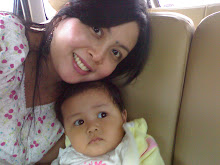| When you’ve had no problems conceiving your first baby you’ve no reason to believe that conceiving a second will be difficult. And so many couples are taken by surprise when they find they do have trouble.
It’s called secondary infertility, and according to Fertility New |
Why can't I conceive again?
| There are many reasons – ovulation problems, polycystic ovarian syndrome (PCOS), fibroids, hormonal disorders, endometriosis, a previous octopi pregnancy, pelvic inflammatory disease or sexually transmitted disease such as Chlamydia, as well as male infertility.
But Fertility NZ thinks the main reason might just be that as you get older, your fertility drops, and many of the causes of infertility are more likely to kick in.
Causes of infertility jump dramatically when women move from their 20s to their 30s. “Five per cent of women in their 20s say they have endometriosis and this almost triples to 14 per cent for women in their thirties,” says Tess Labett. “Likewise, five per cent of women in their twenties say they have PCOS and this doubles for women in their thirties.” |
Seeking help
| As a general guide, a check is advised if you have been trying to conceive for 12 months and are under 35 years old, or after six months if you’re over 35. If you have irregular periods or your partner has a low sperm count, seek help earlier. |
What tests will be done?
| First the doctor will want to establish that you are producing eggs and that your partner is producing sufficient and sufficiently strong and healthy sperm.
Initial tests for women will involve checking blood for serum progesterone, to confirm ovulation; serum gonadotrophins, indicating how many eggs left in your ovaries through levels of Follicle Stimulating Hormone (FSH); and prorating, which can indicate an ovulate disorder.
The next step for women is to look for blockages, damage or abnormalities in the reproductive system. After being screened for Chlamydia, you may be offered a laparoscopy; where a telescopic viewing instrument checks if your fallopian tubes are damaged; a pelvic ultrasound, to identify polycystic ovaries (PCOS); or a hysterosalpingography/hysterosalping-contrast-sonography/hysterscopy, when fluid is injected into the womb and an x-ray or vaginal probe check the uterus and fallopian tubes for blockages or growths.
Men will have a semen sample taken and undergo an examination that checks for swelling, blockages or other indications of a problem. |
What treatment will we receive?
| Treatment options will depend on patient history and the cause of the infertility. In many cases the woman is prescribed ovulation-inducing medication like clomiphene citrate or injections of fertility enhancing drugs.
If damage to the fallopian tubes is established, surgery might be needed or in-vitro fertilization (IVF) might be suggested. If the problem lies with the man, a semen sample will be taken and quality sperm will be extracted for an intrauterine insemination (IUI). |
What will treatment cost?
| The costs vary enormously, between using drugs like clomiphene alone, which is relatively inexpensive, to IVF, which is around $10,000. Some people will be eligible for public funding despite the fact they already have one child. |

No comments:
Post a Comment